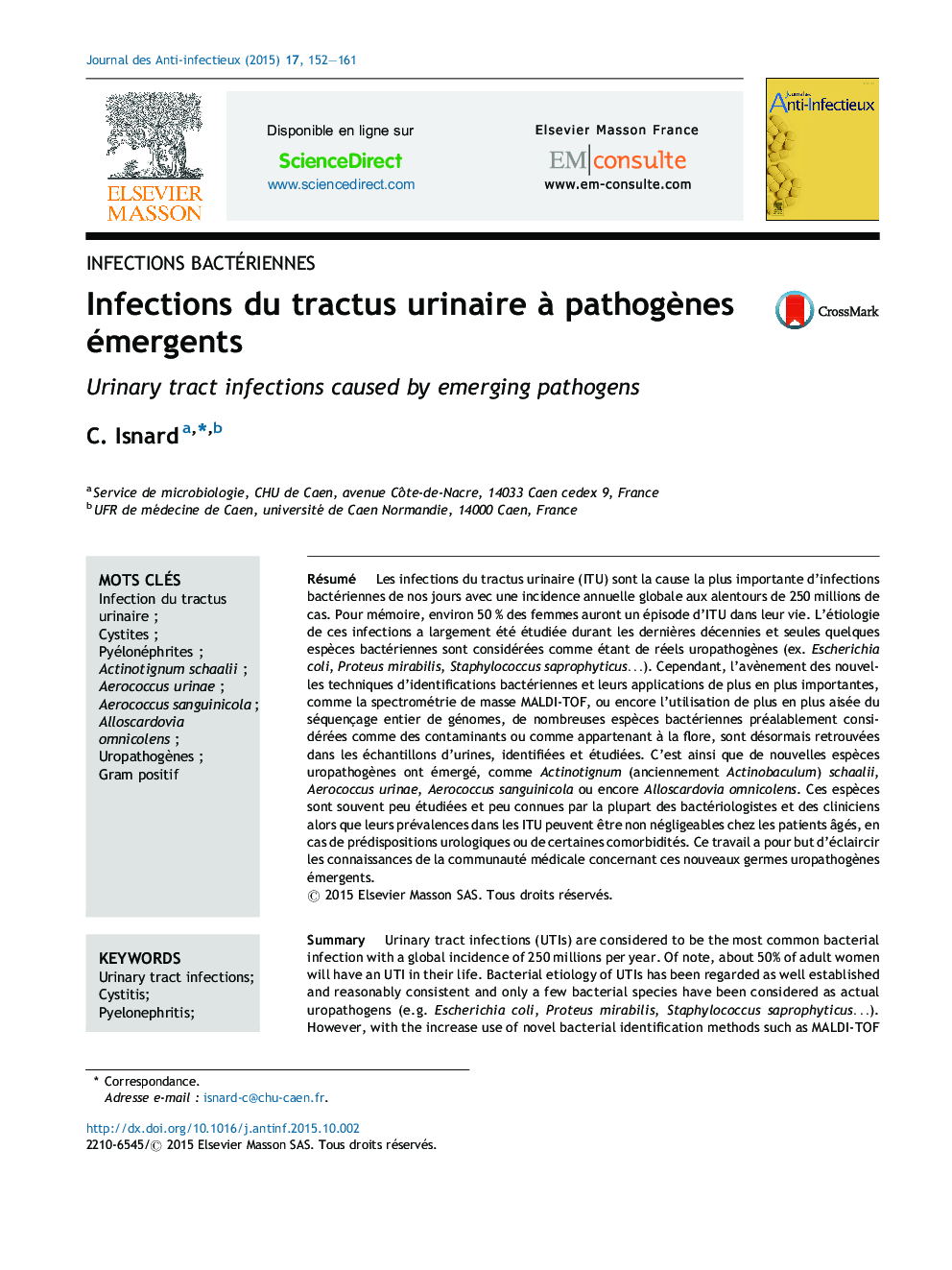| Article ID | Journal | Published Year | Pages | File Type |
|---|---|---|---|---|
| 3405375 | Journal des Anti-infectieux | 2015 | 10 Pages |
Abstract
Urinary tract infections (UTIs) are considered to be the most common bacterial infection with a global incidence of 250 millions per year. Of note, about 50% of adult women will have an UTI in their life. Bacterial etiology of UTIs has been regarded as well established and reasonably consistent and only a few bacterial species have been considered as actual uropathogens (e.g. Escherichia coli, Proteus mirabilis, Staphylococcus saprophyticusâ¦). However, with the increase use of novel bacterial identification methods such as MALDI-TOF mass spectrometry or whole-genome sequencing, several bacterial species, previously considered as contaminants or endogenous flora, are now found in urine samples, correctly identified and well-studied. Thus, new uropathogens bacterial species have emerged, such as Actinotignum (formerly Actinobaculum) schaalii, Aerococcus urinae, Aerococcus sanguinicola or Alloscardovia omnicolens. The knowledge of physicians and microbiologists, concerning the clinical significance of these species is poor, whereas their prevalence in UTIs is likely important in the elderly and in patients with urological underlying conditions or comorbidities. The aim of this study is to update the knowledge of medical community concerning these emerging uropathogens.
Keywords
Related Topics
Health Sciences
Medicine and Dentistry
Infectious Diseases
Authors
C. Isnard,
